Effectivness
Using a story vine as a way for students to connect to a book is a very effective tool to promote literacy and understanding. Students will be asked to reflect on what is important in the book and decide on what should be included in their vine. Using a story vine makes students reflect deeper upon the text then they would in a normal situation, to complete the vine they must decipher the meaning and important parts of the text. To aid in this provinding students with a story board or some organizational tool will help them pick what is important and what does not need to be refrenced.
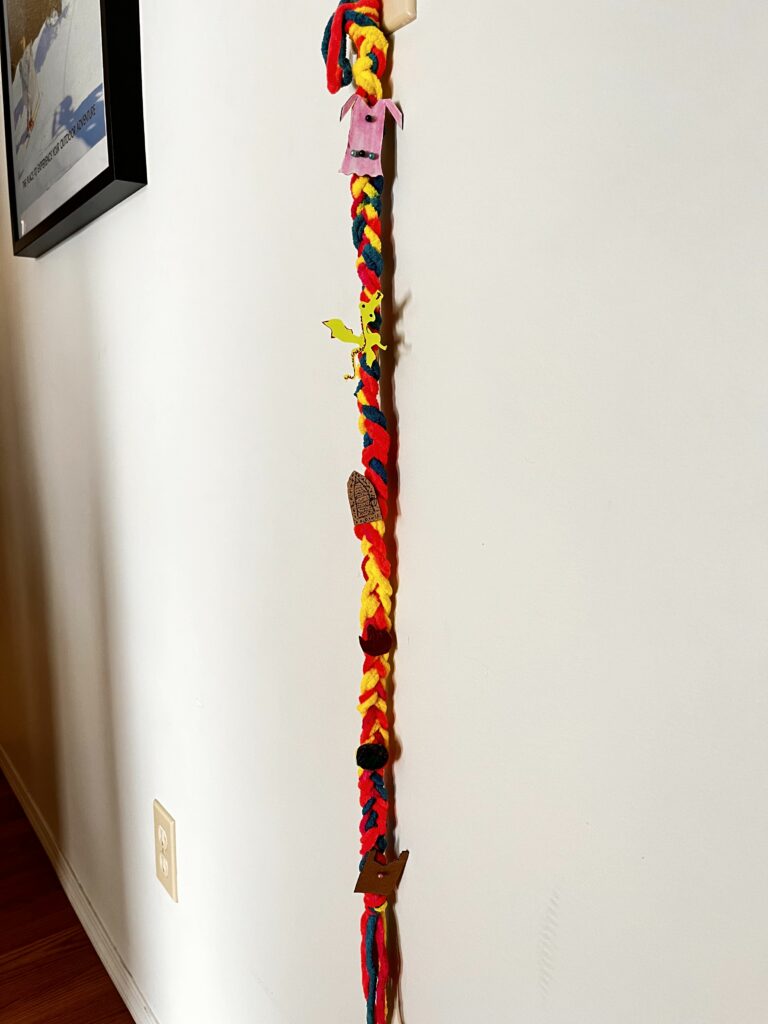
A story vine is a pice of wool, braided where students create and attach artifacts that resemble meaning in the corrosponding story. Students can create these artifacts using a variety of supplies. By doing this project in pairs more understanding of the book can be brought out, students will be able to bounce and share ideas off of one another. Their are so many benifits and reasons using story vines in the classroom is a good idea, Marlene Mckay states in her book Story Vines and Readers Theatre that by using story vines one will develop many skills such as: a sense of story structure, comprehension skills, vocabulary, fluency, oral language, memory skills, meaningful connections, and much much more.
My experinece
For my story vine on the Paper Bag Princess By Robert Munsch i started off brainstorming with my partner Lauren, together we cam up with some greate ideas to represent what we felt was important to the story.
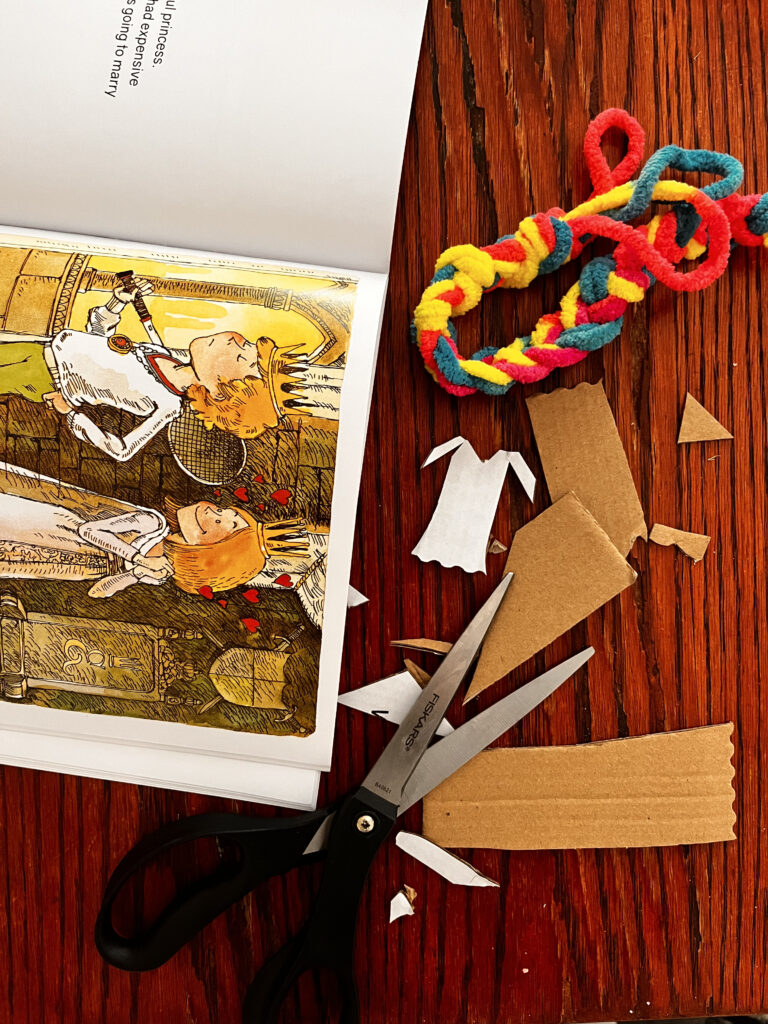
First, I decided on what yarn I wanted to use, I choose the most colorful as it well just stood out to me. With the help of my peers I was bale to braid my yarn into a “Vine”. Then I started to create my artifacts represneting the story. To create them I used beads, glue, coloured pens, and cardboard; I cut out the shape I would want, Coloured it the colour I needed, and added any beads where it wouldd help create texture. I then attached them onto my vine in corrosponding order to create my first ever story vine.
This experince showed me how effective a story vine can be in the classroom. By doing this project I was forced to reread the book, to analyze parts of it and decide what I thought were the most influential parts of the book. After completing the stroy vine i now have a deeper and richer understanding of The paper bag princess, below are the artifacts i created and the reasons I thought each was important.
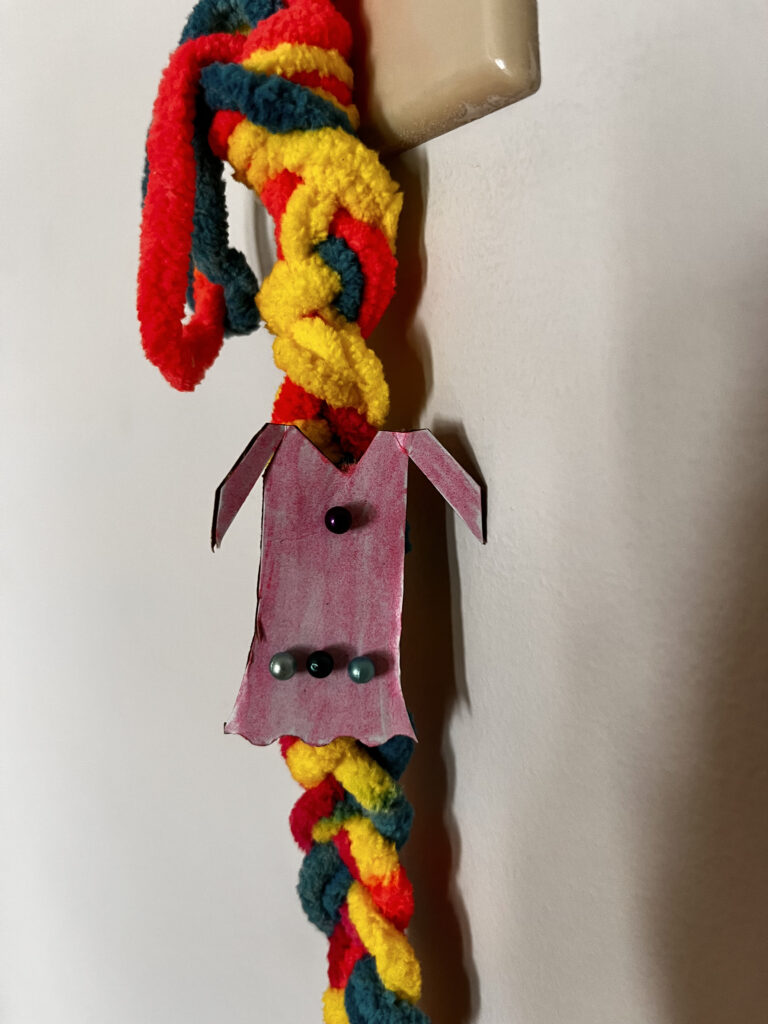
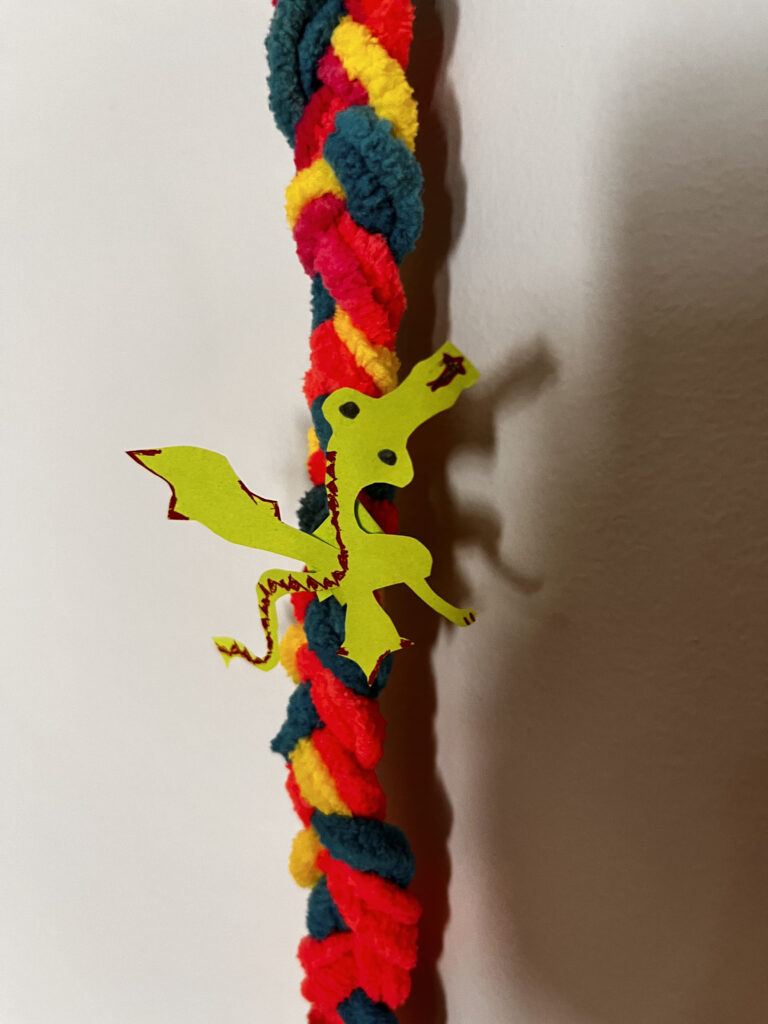
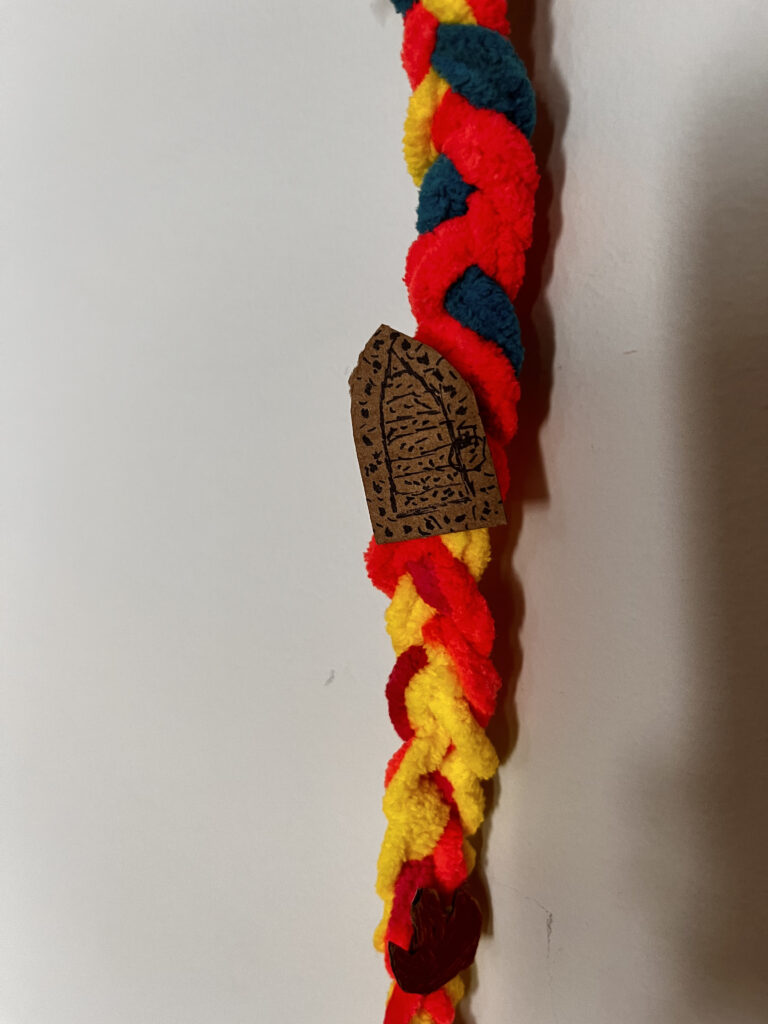
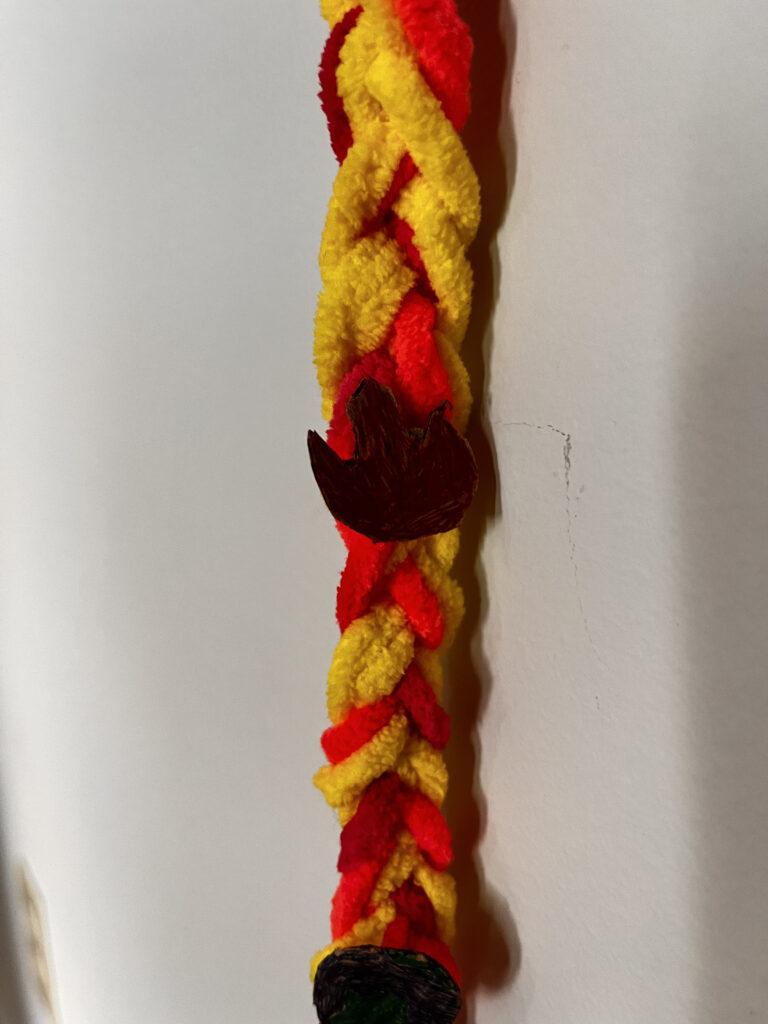
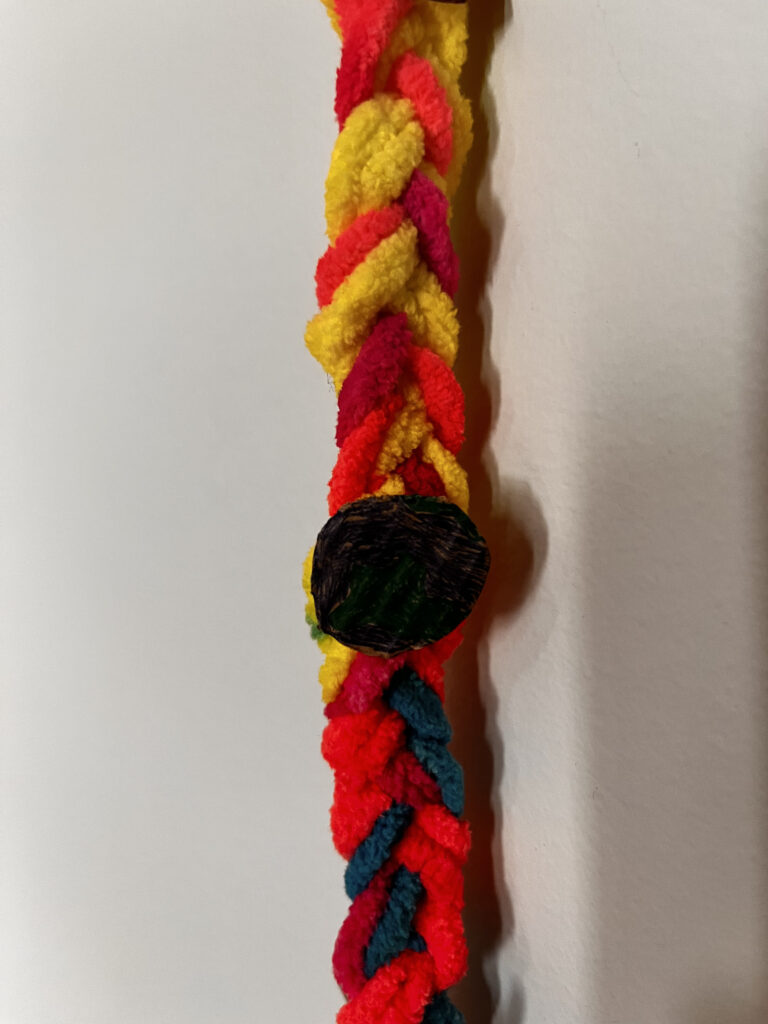
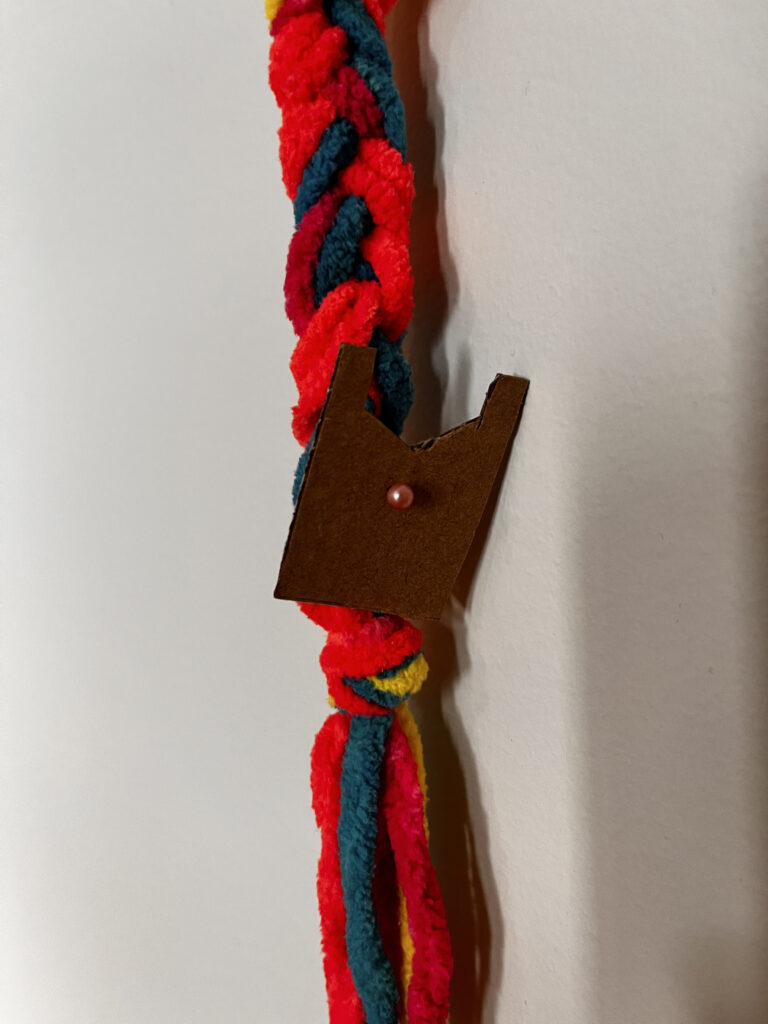
1: The first artifact I used was a princess dress, I cut out a piece of cardboard, drew on it and then added beads before attaching it to my vine. The dress is meant to resemble the paper bag princess, who is a rich girl who lives in a castle and is about to mary a prince.
2: My second artifact was the dragon who burned her castle down, he becomes an imprtant charecter for the rest of the book as he is the antagonsit. To create the dragon I cut out a outline using a green stickey note and added red scales to make it look like the dragon in the story
3: The third object I used was the door, here is where the princess confronts the dragon and begins to outwit him to try to save her prince. To do this she asked the dragon blow as big of a flame as he can, and to fly around the world as fast as he can. These flames are my 4th object while the world is my 5th one.
6: the last and most important object in my vine is the paper bag dress. After the princess tires out the dragon she is able to free her prince, but he is not to nice to her afterwards, so instead of returning to her fancy princess dress ways she accepts the title of “the paper bag princess”. By using htis as the last artifact and her original dress as the first I hope to show the growth she has made through the story, accepting unmaterialistic things, and accepting who you truly are.
Leave a Reply